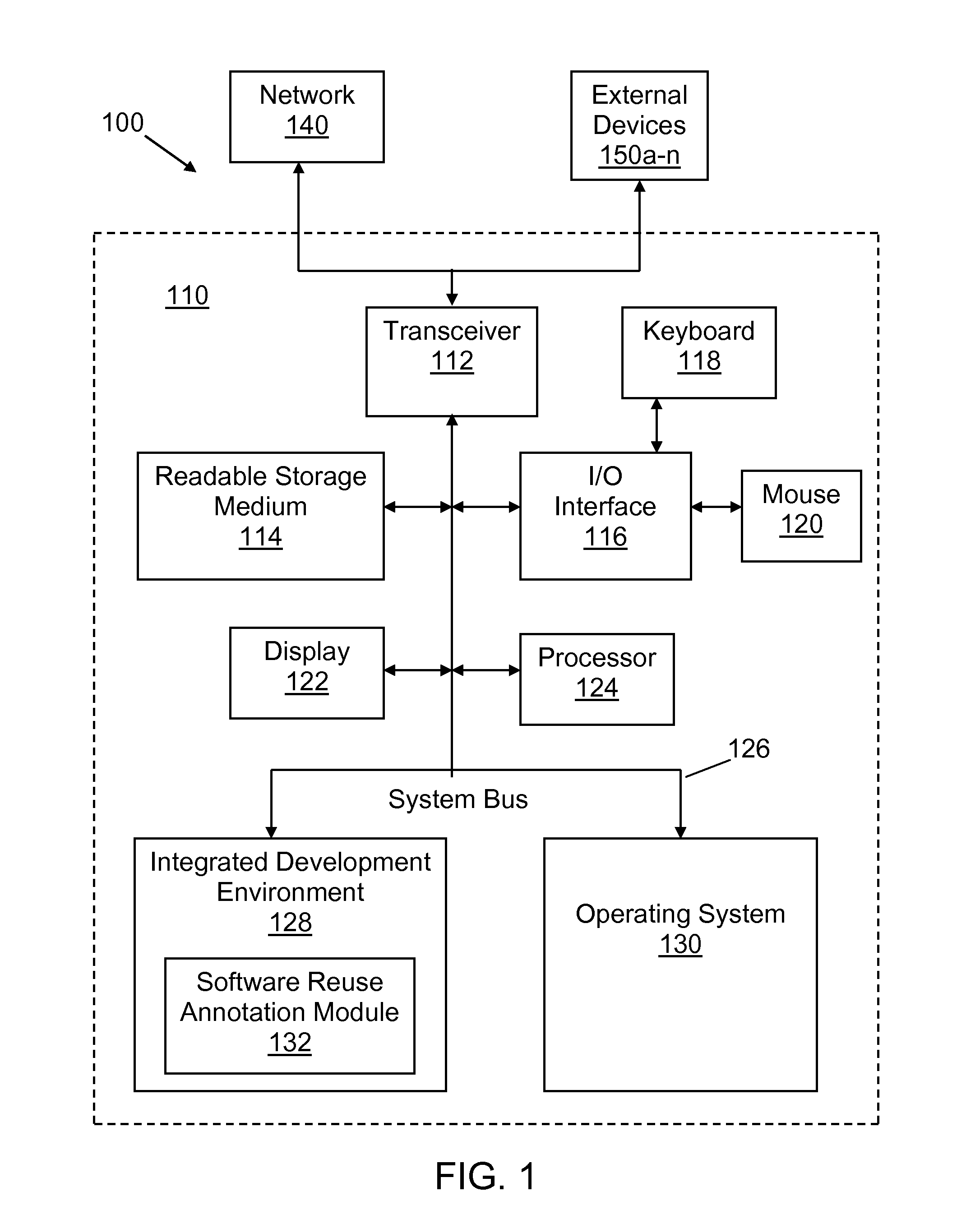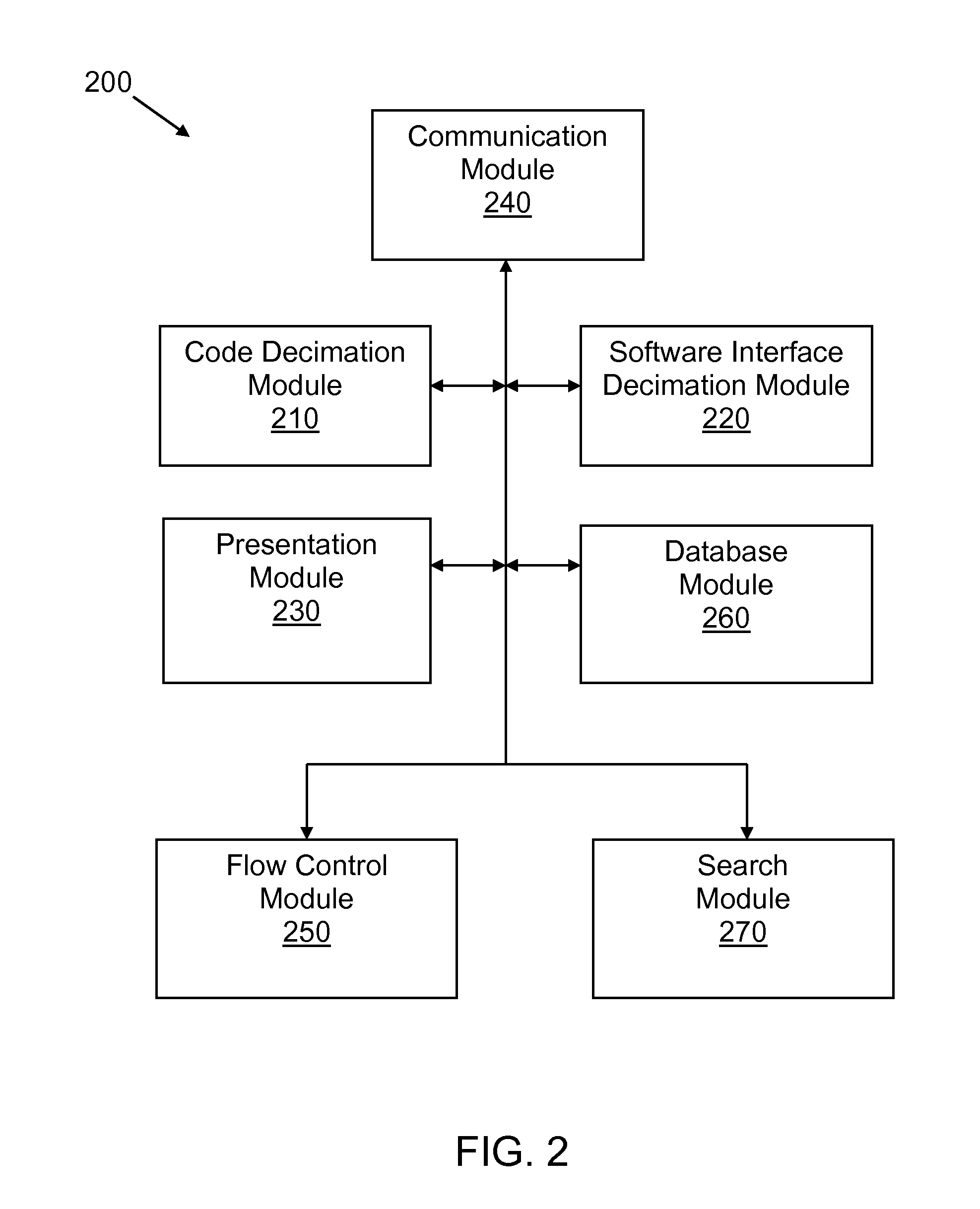Software reuse utilizing naive group annotation of incomplete software descriptions employing a self-reporting element
a software description and self-reporting technology, applied in the field of software development systems, can solve the problems of difficult automatic recognition, high cost, and difficulty in identifying where code or tools may best be reused, and achieve the effect of maintaining software reuseability and generating monetary and/or nonmonetary benefits
- Summary
- Abstract
- Description
- Claims
- Application Information
AI Technical Summary
Benefits of technology
Problems solved by technology
Method used
Image
Examples
Embodiment Construction
[0012]In the following detailed description of exemplary embodiments of the invention, specific exemplary embodiments in which the invention may be practiced are described in sufficient detail to enable those skilled in the art to practice the invention, and it is to be understood that other embodiments may be utilized and that logical, architectural, programmatic, mechanical, electrical and other changes may be made without departing from the spirit or scope of the present invention. The following detailed description is, therefore, not to be taken in a limiting sense, and the scope of the present invention is defined only by the appended claims.
[0013]It is understood that the use of specific component, device and / or parameter names are for example only and not meant to imply any limitations on the invention. The invention may thus be implemented with different nomenclature / terminology utilized to describe the components / devices / parameters herein, without limitation. Each term util...
PUM
 Login to View More
Login to View More Abstract
Description
Claims
Application Information
 Login to View More
Login to View More - R&D
- Intellectual Property
- Life Sciences
- Materials
- Tech Scout
- Unparalleled Data Quality
- Higher Quality Content
- 60% Fewer Hallucinations
Browse by: Latest US Patents, China's latest patents, Technical Efficacy Thesaurus, Application Domain, Technology Topic, Popular Technical Reports.
© 2025 PatSnap. All rights reserved.Legal|Privacy policy|Modern Slavery Act Transparency Statement|Sitemap|About US| Contact US: help@patsnap.com



